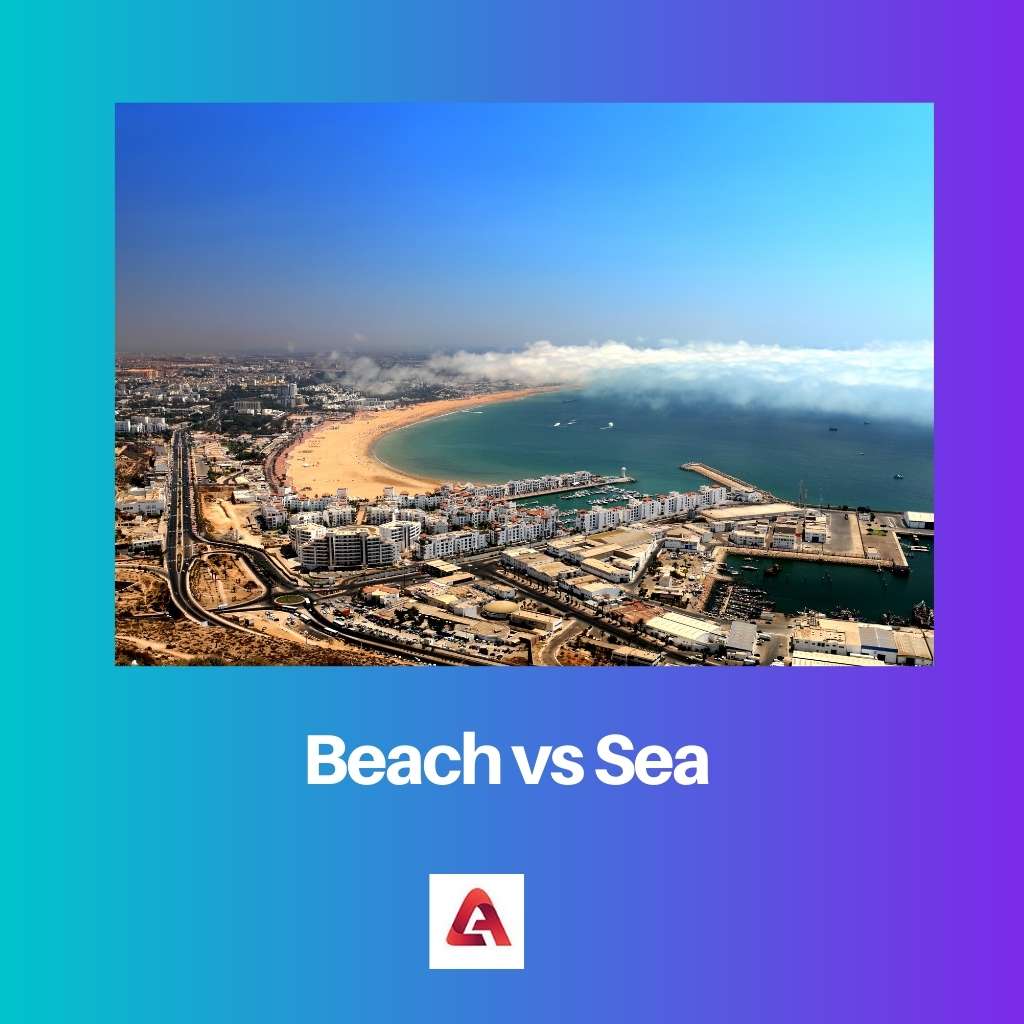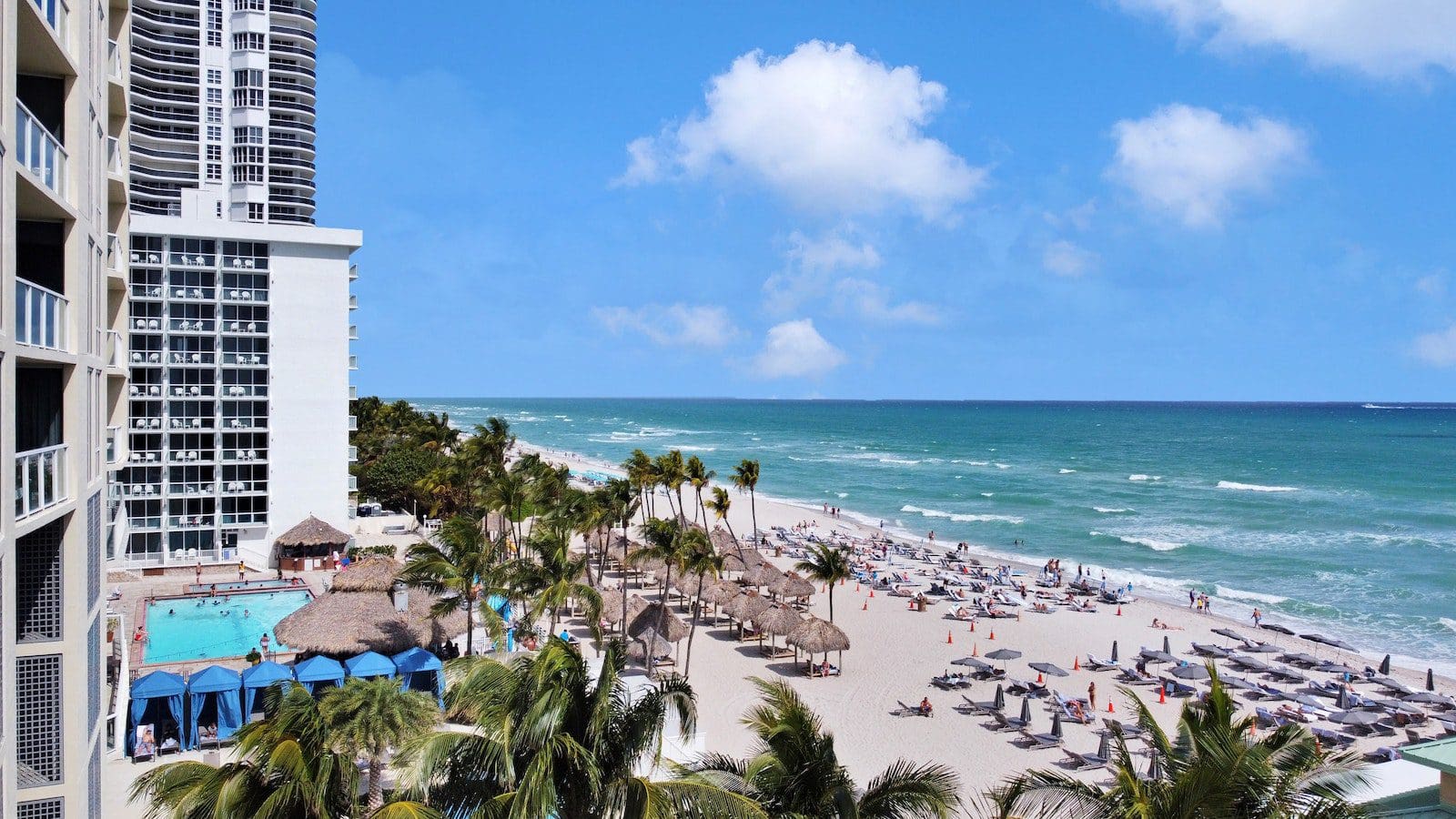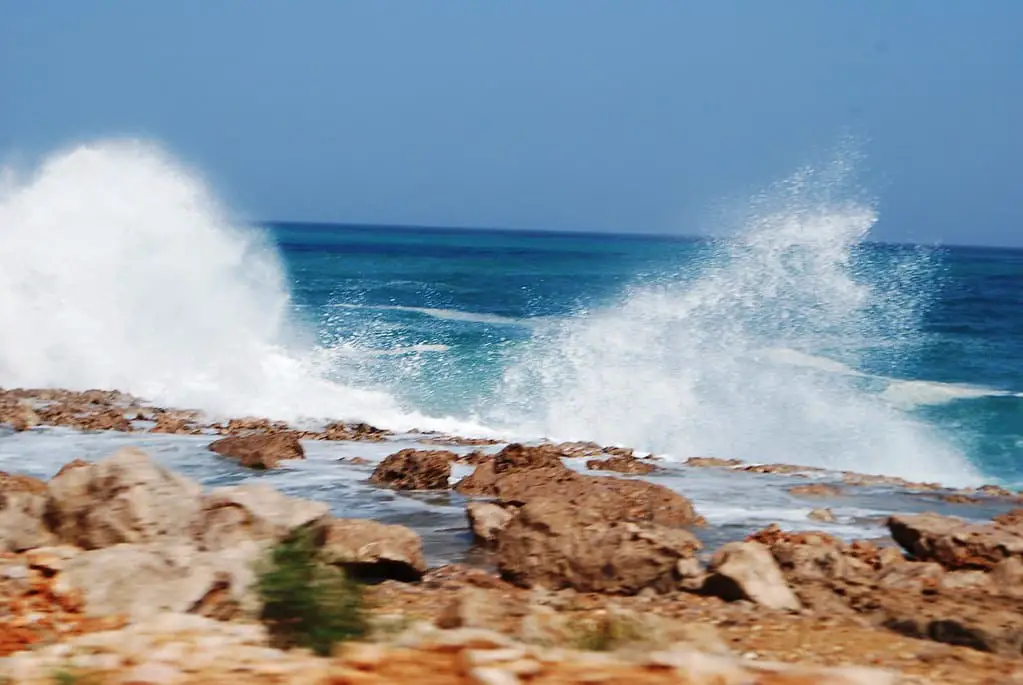Beaches and Seas are both very popular amongst travelers as of now. Beaches can be found right alongside all the different seas.
Seas are bodies of water that get connected to the oceans. The material they are made up of differs along with the lifeforms they sustain.
Key Takeaways
- A beach is a sandy or pebbly shore next to a body of water, while the sea is a large body of saltwater.
- A beach is a place for leisure activities like sunbathing, swimming, and surfing, while the sea is a natural water body with a diverse ecosystem.
- A beach is a part of the land, while the sea is a part of the Earth’s hydrosphere.
Beach vs Sea
A beach is a landform. It is the area along the edge of a sea, lake, or wide river that is covered with sand, pebbles, small stones and seashell fragments. A sea is a smaller portion of the ocean that is partly surrounded by land located where the land and ocean meet. It is a body of salty water.

Beaches are thin swaths of land that separate a body of water from the area beneath the inland. The region around the shore is covered in materials such as sand, pebbles, rocks, and seashells.
The beach is basically where all bodies of water, including the ocean, terminate, and the drylands begin. The Sea is the expanse of salt that spans much of the Earth’s surface and surrounds its landmasses.
The sea refers to the portion of the ocean that is partially enclosed by land. However, there are certain seas that are fully landlocked, such as the Caspian Sea.
Comparison Table
| Parameters of Comparison | Beach | Sea |
|---|---|---|
| Meaning | Landform | Body of water. |
| Animals Found | Lesser animals. | More animals. |
| Made up of | Sand and rocks | Water |
| Popularity | More popular as more people visit them. | Less popular. |
| Coverage | Covers lesser area | Covers more area |
| Examples | Waikiki, Santa Monica Beach, South Beach, Maya Bay, etc. | The Caribbean Sea, Bering Sea, Mediterranean Sea, etc. |
What is Beach?
Beaches are landforms produced by a portion of the shorelines of various bodies of water. Beaches are smaller in size and span a much smaller area because they are part of an ocean and contain significantly less marine life.
Beaches do not have a specific location or region. They can be found all over the world in various places with varying characteristics.
Beaches are types of landforms. They are a part of shorelines or diverse bodies of water such as lakes, seas, or even oceans.
The color of the beach is defined by the type of rock washed up on the shore. Beaches, as a landform, contain various rock particles such as stones, gravels, cobblestones, and sand.
Now, the action of the seas’ waves creates a change in the sediments, as well as a shift in the coastal areas. As a result, this implies that the tides of those seas either form or destroy the beaches.
Beaches are sediments that accumulate along sea or lakeshores, their shape and contours dictated by the functioning of coastal processes, the types of sediments involved, and the speed at which this material is delivered.
Beaches are divided into three different types. These include a sediment strip that borders a rocky or cliff coast, the outer margin of marine or free beaches, and a series of narrow sediment barriers.
A beach is a landform formed by loose particles along the shore of a body of water. A beach’s particles are made of rock, such as sand, gravel, shingle, pebbles, and so on, or biological sources, such as mollusk shells or coralline algae.
Depending on the local wave activity and weather, sediments settle in varying densities and structures, resulting in a variety of textures, hues, and gradients or layers of material.

What is Sea?
A sea is a body of water that is smaller than an ocean. It is made up of saline water.
The sea is the point at which the ocean joins the land. A Sea has an abundance of marine life because it is closer to shore and less deep than the ocean, making it ideal for marine life.
The temperature and location of a sea determine the marine life that lives there. The sea is also exploited for business purposes to obtain salt.
The sea also influences the earth’s climate through the processes of evaporation and condensation. All seas are oceans, and the smaller seas eventually merge to form a vast body of water known as the ocean.
Humans rely heavily on the sea for sustenance, primarily fish. The sea is used for trade, travel, resource extraction, power generation, combat, and a variety of recreational activities.
The sea is similarly made primarily of salty water; however, it is much less in size than oceans. The Mediterranean Sea is the largest sea.
The Mediterranean Sea has an area of around 1.14 million square miles. Because seas are positioned close to land, aquatic life abounds.
Because sunlight can reach deeper into the seas, allowing photosynthesis, there is a great amount of marine life in the Seas. The Caribbean Sea is the deepest sea, at a depth of around 6900 meters.

Main Differences Between Beach and Sea
- A beach is a landform, and a sea is a body of water that is connected to the ocean.
- The sea has an abundance of lifeforms, whereas a beach has comparatively fewer lifeforms like plants or animals.
- A beach is made up of sand, stones, gravel, etc. On the other hand, the sea is made up of water.
- Beaches are more popular are people have made them into a tourist attraction whereas the sea is less popular.
- The sea covers more area on the earth than beaches.
- Some examples of beaches are Santa Monica Beach, Waikiki, South Beach, Maya Bay, etc. Some examples of seas are The Caribbean Sea, Bering Sea, Mediterranean Sea, etc.




